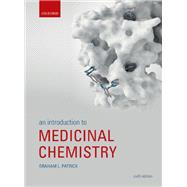An Introduction to Medicinal Chemistry

An Introduction to Medicinal Chemistry
- ISBN 13:
9780191073915
- ISBN 10:
0191073911
- Edition: 6th
- Format: eBook
- Copyright: 05/11/2017
- Publisher: Oxford
- Newer Edition
Rent
Sorry, this item is currently unavailable.



